IGF-1 DES 1mg
IGF-1 DES 1mg
IGF-1 DES, a potent form of Insulin-like Growth Factor 1, enhances muscle growth and repair, improves fat metabolism, accelerates recovery, provides neuroprotective effects, and supports bone health (PMID: 21135066,PMID: 8970554, PMID: 31525624, PMID: 8603600, PMID: 25147565 ).
IGF-1 DES, a truncated form of Insulin-like Growth Factor 1, has several notable benefits:
- Enhanced Muscle Growth and Repair: IGF-1 DES is significantly more potent than IGF-1 in promoting muscle hypertrophy. It stimulates muscle cell proliferation and differentiation, leading to increased muscle mass and strength, making it popular among bodybuilders and athletes (PMID: 21135066).
- Improved Fat Metabolism: This peptide enhances fat breakdown and reduces fat storage, which helps in improving body composition and reducing overall body fat (PMID: 8970554).
- Accelerated Recovery: IGF-1 DES aids in faster recovery from exercise and injuries by promoting cellular repair processes and reducing muscle damage (PMID: 31525624).
- Neuroprotective Effects: It has shown potential in protecting neurons from damage, which could be beneficial in neurodegenerative conditions (PMID: 8603600).
- Bone Health: IGF-1 DES supports bone growth and repair, contributing to stronger bones and potentially aiding in the treatment of conditions like osteoporosis (PMID: 25147565).
Peer-Reviewed Studies
Pan, W., & Kastin, A. J. (2000) Neuroendocrinology, 72(3), 171-178.
Kummer, A., Pulford, B. E., Ishii, D. N., & Seigel, G. M. (2003). Experimental Diabesity Research, 4(1), 45-57.
Structure

Sequence:
TLCGAELVDALQFVCGDRGFYFNKPTGYGSSSRRAPQTGIVDECCFRSCDLRRLEMYCAPLKAAKS
A Molecular Formula: C H N O S
Molecular Weight: 7365.4225 g/mol
PubChem CID: 135331146
CAS Number: 112603-35-7
Synonyms: Insulin-like growth factor 1, des-(1-3)-, Des(1-3) IGF-1, 4-70-insulin-like growth factor 1
IGF-1 DES Research
IGF-1 DES Is More Potent Than IGF-1
IGF-1 DES lacks just three amino acids from its N-terminal end, but that subtle change makes a big difference. Research shows that IGF-1 DES does not bind very well to IGF-1 binding proteins (IGFBPs) found in the blood and in various tissues throughout the body. The result is that more of the peptide is available for binding to important receptors and thus IGF-1 DES is more potent (same effects at lower doses) than IGF-1 itself. Research in pigs and marmosets indicates that IGF-1 DES is 2-3 times more potent than IGF-1 in lowering blood sugar. Further, these same potency effects extend to other properties of IGF-1 as well, including its anabolic effects on skeletal muscle and its neuroprotective effects [2].
One of the benefits of binding to IGFBPs is prolonged activity as a result of decreased clearance from the circulation. Thus, IGF-1 DES has a much faster onset of action, higher peak activity, and faster withdrawal than IGF-1 itself. There are a number of settings in which this type of efficacy profile could be useful, including the treatment of hyperglycemic conditions.
Research in pigs indicates that IGF-1 variants with low affinities for IGFBPs have a more dramatic effect on growth. In fact, the anabolic effects of IGF-1 DES occur even in the setting of limited calorie intake[3]. Research in rats shows that just 14 days of IGF-1 DES is enough to produce significant increases in body weight, nitrogen retention, and food conversion efficiency[4]. The latter fact is important as it confirms the potential of IGF-1 DES to improve anabolism even in the setting of poor calorie intake, a function that would make the peptide useful in chronic disease and in individuals who are unable to consume a great deal of calories for a variety of reasons. IGF-1 has also been shown to be a more effective antihyperglycemic agent, lower blood sugar rapid after administration. This is part of the reason the peptide is so efficient in boosting growth with lower calorie consumption. There is interest among researchers in using IGF-1 DES as a potential treatment in hyperglycemia were it would have similar effects to insulin administration without the long-term side effects that can occur if too much insulin is used.
IGF-1 DES Research and Neurological Disease
It has been long established that IGF-1 has important effects on neuron growth, differentiation, and survival. The protein is a major factor in synaptic formation and thus plays a critical role in learning, memory, and more. IGF-1 is particularly important for the development and maintenance of mature synapses. Research shows that IGF-1 is absolutely necessary for achieving proper levels of presynaptic synapsin-1, a protein that regulates the release of neurotransmitters. The peptide is also important for the post-synaptic PSD-95 protein, which maintains synaptic structure. Without IGF-1, synaptic development is disrupted and deficits in motor skills, behavior, cognitive functioning, and language all develop.

IGF-1 DES Research and Immune Function
IGF-1 DES May Improve Wound Healing
IGF-1 DES Research and Cancer
IGF-1 DES Is a New Contender
Article Author
Scientific Journal Author
Referenced Citations
- F. J. Ballard, J. C. Wallace, G. L. Francis, L. C. Read, and F. M. Tomas, “Des(1-3)IGF-I: a truncated form of insulin-like growth factor-I,” Int. J. Biochem. Cell Biol., vol. 28, no. 10, pp. 1085– 1087, Oct. 1996. 1
- F. M. Tomas, P. E. Walton, F. R. Dunshea, and F. J. Ballard, “IGF-I variants which bind poorly to IGF-binding proteins show more potent and prolonged hypoglycaemic action than native IGF-I in pigs and marmoset monkeys,” J. Endocrinol., vol. 155, no. 2, pp. 377–386, Nov. 1997.
- P. E. Walton, F. R. Dunshea, and F. J. Ballard, “In vivo actions of IGF analogues with poor affinities for IGFBPs: metabolic and growth effects in pigs of different ages and GH responsiveness,” Prog. Growth Factor Res., vol. 6, no. 2–4, pp. 385–395, 1995.
- F. J. Ballard, P. E. Walton, S. Bastian, F. M. Tomas, J. C. Wallace, and G. L. Francis, “Effects of interactions between IGFBPs and IGFs on the plasma clearance and in vivo biological activities of IGFs and IGF analogs,” Growth Regul., vol. 3, no. 1, pp. 40–44, Mar. 1993.
- R. Canitano, “New experimental treatments for core social domain in autism spectrum disorders,” Front. Pediatr., vol. 2, p. 61, 2014.
- J Costales and A. Kolevzon, “The Therapeutic Potential of Insulin-Like Growth Factor-1 in Central Nervous System Disorders,” Neurosci. Biobehav. Rev., vol. 63, pp. 207–222, Apr. 2016.
- R. Riikonen, “Insulin-Like Growth Factors in the Pathogenesis of Neurological Diseases in Children,” Int. J. Mol. Sci., vol. 18, no. 10, Sep. 2017.
- A. B. Steinmetz, S. A. Stern, A. S. Kohtz, G. Descalzi, and C. M. Alberini, “Insulin-Like Growth Factor II Targets the mTOR Pathway to Reverse Autism-Like Phenotypes in Mice,” J. Neurosci. Off. J. Soc. Neurosci., vol. 38, no. 4, pp. 1015–1029, 24 2018.
- D. Ebrahimi-Fakhari and M. Sahin, “Autism and the synapse: emerging mechanisms and mechanism-based therapies,” Curr. Opin. Neurol., vol. 28, no. 2, pp. 91–102, Apr. 2015.
- D. C. Górecki, M. Beresewicz, and B. Zabłocka, “Neuroprotective effects of short peptides derived from the Insulin-like growth factor 1,” Neurochem. Int., vol. 51, no. 8, pp. 451–458, Dec. 2007.
- M. M. Ramsey, M. M. Adams, O. J. Ariwodola, W. E. Sonntag, and J. L. Weiner, “Functional characterization of des-IGF-1 action at excitatory synapses in the CA1 region of rat hippocampus,” J. Neurophysiol., vol. 94, no. 1, pp. 247–254, Jul. 2005.
- X. Zhao, B. W. McBride, L. M. Trouten-Radford, and J. H. Burton, “Effects of insulin-like growth factor-I and its analogues on bovine hydrogen peroxide release by neutrophils and blastogenesis by mononuclear cells,” J. Endocrinol., vol. 139, no. 2, pp. 259–265, Nov. 1993.
- M. E. Yateman, D. C. Claffey, S. C. Cwyfan Hughes, V. J. Frost, J. A. Wass, and J. M. Holly, “Cytokines modulate the sensitivity of human fibroblasts to stimulation with insulin-like growth factor-I (IGF-I) by altering endogenous IGF-binding protein production,” J. Endocrinol., vol. 137, no. 1, pp. 151–159, Apr. 1993.
- M. Remacle-Bonnet, F. Garrouste, F. el Atiq, M. Roccabianca, J. Marvaldi, and G. Pommier, “des- (1-3)-IGF-I, an insulin-like growth factor analog used to mimic a potential IGF-II autocrine loop, promotes the differentiation of human colon-carcinoma cells,” Int. J. Cancer, vol. 52, no. 6, pp. 910–917, Dec. 1992.
- J Clin Invest. 2004;113(1):25-27. https://doi.org/10.1172/JCI20660.
$106.00
Description
IGF-1 DES, a potent form of Insulin-like Growth Factor 1, enhances muscle growth and repair, improves fat metabolism, accelerates recovery, provides neuroprotective effects, and supports bone health (PMID: 21135066,PMID: 8970554, PMID: 31525624, PMID: 8603600, PMID: 25147565 ).
IGF-1 DES, a truncated form of Insulin-like Growth Factor 1, has several notable benefits:
- Enhanced Muscle Growth and Repair: IGF-1 DES is significantly more potent than IGF-1 in promoting muscle hypertrophy. It stimulates muscle cell proliferation and differentiation, leading to increased muscle mass and strength, making it popular among bodybuilders and athletes (PMID: 21135066).
- Improved Fat Metabolism: This peptide enhances fat breakdown and reduces fat storage, which helps in improving body composition and reducing overall body fat (PMID: 8970554).
- Accelerated Recovery: IGF-1 DES aids in faster recovery from exercise and injuries by promoting cellular repair processes and reducing muscle damage (PMID: 31525624).
- Neuroprotective Effects: It has shown potential in protecting neurons from damage, which could be beneficial in neurodegenerative conditions (PMID: 8603600).
- Bone Health: IGF-1 DES supports bone growth and repair, contributing to stronger bones and potentially aiding in the treatment of conditions like osteoporosis (PMID: 25147565).
Peer-Reviewed Studies
Pan, W., & Kastin, A. J. (2000) Neuroendocrinology, 72(3), 171-178.
Kummer, A., Pulford, B. E., Ishii, D. N., & Seigel, G. M. (2003). Experimental Diabesity Research, 4(1), 45-57.
Structure

Sequence:
TLCGAELVDALQFVCGDRGFYFNKPTGYGSSSRRAPQTGIVDECCFRSCDLRRLEMYCAPLKAAKS
A Molecular Formula: C H N O S
Molecular Weight: 7365.4225 g/mol
PubChem CID: 135331146
CAS Number: 112603-35-7
Synonyms: Insulin-like growth factor 1, des-(1-3)-, Des(1-3) IGF-1, 4-70-insulin-like growth factor 1
IGF-1 DES Research
IGF-1 DES Is More Potent Than IGF-1
IGF-1 DES lacks just three amino acids from its N-terminal end, but that subtle change makes a big difference. Research shows that IGF-1 DES does not bind very well to IGF-1 binding proteins (IGFBPs) found in the blood and in various tissues throughout the body. The result is that more of the peptide is available for binding to important receptors and thus IGF-1 DES is more potent (same effects at lower doses) than IGF-1 itself. Research in pigs and marmosets indicates that IGF-1 DES is 2-3 times more potent than IGF-1 in lowering blood sugar. Further, these same potency effects extend to other properties of IGF-1 as well, including its anabolic effects on skeletal muscle and its neuroprotective effects [2].
One of the benefits of binding to IGFBPs is prolonged activity as a result of decreased clearance from the circulation. Thus, IGF-1 DES has a much faster onset of action, higher peak activity, and faster withdrawal than IGF-1 itself. There are a number of settings in which this type of efficacy profile could be useful, including the treatment of hyperglycemic conditions.
Research in pigs indicates that IGF-1 variants with low affinities for IGFBPs have a more dramatic effect on growth. In fact, the anabolic effects of IGF-1 DES occur even in the setting of limited calorie intake[3]. Research in rats shows that just 14 days of IGF-1 DES is enough to produce significant increases in body weight, nitrogen retention, and food conversion efficiency[4]. The latter fact is important as it confirms the potential of IGF-1 DES to improve anabolism even in the setting of poor calorie intake, a function that would make the peptide useful in chronic disease and in individuals who are unable to consume a great deal of calories for a variety of reasons. IGF-1 has also been shown to be a more effective antihyperglycemic agent, lower blood sugar rapid after administration. This is part of the reason the peptide is so efficient in boosting growth with lower calorie consumption. There is interest among researchers in using IGF-1 DES as a potential treatment in hyperglycemia were it would have similar effects to insulin administration without the long-term side effects that can occur if too much insulin is used.
IGF-1 DES Research and Neurological Disease
It has been long established that IGF-1 has important effects on neuron growth, differentiation, and survival. The protein is a major factor in synaptic formation and thus plays a critical role in learning, memory, and more. IGF-1 is particularly important for the development and maintenance of mature synapses. Research shows that IGF-1 is absolutely necessary for achieving proper levels of presynaptic synapsin-1, a protein that regulates the release of neurotransmitters. The peptide is also important for the post-synaptic PSD-95 protein, which maintains synaptic structure. Without IGF-1, synaptic development is disrupted and deficits in motor skills, behavior, cognitive functioning, and language all develop.

IGF-1 DES Research and Immune Function
IGF-1 DES May Improve Wound Healing
IGF-1 DES Research and Cancer
IGF-1 DES Is a New Contender
Article Author
Scientific Journal Author
Referenced Citations
- F. J. Ballard, J. C. Wallace, G. L. Francis, L. C. Read, and F. M. Tomas, “Des(1-3)IGF-I: a truncated form of insulin-like growth factor-I,” Int. J. Biochem. Cell Biol., vol. 28, no. 10, pp. 1085– 1087, Oct. 1996. 1
- F. M. Tomas, P. E. Walton, F. R. Dunshea, and F. J. Ballard, “IGF-I variants which bind poorly to IGF-binding proteins show more potent and prolonged hypoglycaemic action than native IGF-I in pigs and marmoset monkeys,” J. Endocrinol., vol. 155, no. 2, pp. 377–386, Nov. 1997.
- P. E. Walton, F. R. Dunshea, and F. J. Ballard, “In vivo actions of IGF analogues with poor affinities for IGFBPs: metabolic and growth effects in pigs of different ages and GH responsiveness,” Prog. Growth Factor Res., vol. 6, no. 2–4, pp. 385–395, 1995.
- F. J. Ballard, P. E. Walton, S. Bastian, F. M. Tomas, J. C. Wallace, and G. L. Francis, “Effects of interactions between IGFBPs and IGFs on the plasma clearance and in vivo biological activities of IGFs and IGF analogs,” Growth Regul., vol. 3, no. 1, pp. 40–44, Mar. 1993.
- R. Canitano, “New experimental treatments for core social domain in autism spectrum disorders,” Front. Pediatr., vol. 2, p. 61, 2014.
- J Costales and A. Kolevzon, “The Therapeutic Potential of Insulin-Like Growth Factor-1 in Central Nervous System Disorders,” Neurosci. Biobehav. Rev., vol. 63, pp. 207–222, Apr. 2016.
- R. Riikonen, “Insulin-Like Growth Factors in the Pathogenesis of Neurological Diseases in Children,” Int. J. Mol. Sci., vol. 18, no. 10, Sep. 2017.
- A. B. Steinmetz, S. A. Stern, A. S. Kohtz, G. Descalzi, and C. M. Alberini, “Insulin-Like Growth Factor II Targets the mTOR Pathway to Reverse Autism-Like Phenotypes in Mice,” J. Neurosci. Off. J. Soc. Neurosci., vol. 38, no. 4, pp. 1015–1029, 24 2018.
- D. Ebrahimi-Fakhari and M. Sahin, “Autism and the synapse: emerging mechanisms and mechanism-based therapies,” Curr. Opin. Neurol., vol. 28, no. 2, pp. 91–102, Apr. 2015.
- D. C. Górecki, M. Beresewicz, and B. Zabłocka, “Neuroprotective effects of short peptides derived from the Insulin-like growth factor 1,” Neurochem. Int., vol. 51, no. 8, pp. 451–458, Dec. 2007.
- M. M. Ramsey, M. M. Adams, O. J. Ariwodola, W. E. Sonntag, and J. L. Weiner, “Functional characterization of des-IGF-1 action at excitatory synapses in the CA1 region of rat hippocampus,” J. Neurophysiol., vol. 94, no. 1, pp. 247–254, Jul. 2005.
- X. Zhao, B. W. McBride, L. M. Trouten-Radford, and J. H. Burton, “Effects of insulin-like growth factor-I and its analogues on bovine hydrogen peroxide release by neutrophils and blastogenesis by mononuclear cells,” J. Endocrinol., vol. 139, no. 2, pp. 259–265, Nov. 1993.
- M. E. Yateman, D. C. Claffey, S. C. Cwyfan Hughes, V. J. Frost, J. A. Wass, and J. M. Holly, “Cytokines modulate the sensitivity of human fibroblasts to stimulation with insulin-like growth factor-I (IGF-I) by altering endogenous IGF-binding protein production,” J. Endocrinol., vol. 137, no. 1, pp. 151–159, Apr. 1993.
- M. Remacle-Bonnet, F. Garrouste, F. el Atiq, M. Roccabianca, J. Marvaldi, and G. Pommier, “des- (1-3)-IGF-I, an insulin-like growth factor analog used to mimic a potential IGF-II autocrine loop, promotes the differentiation of human colon-carcinoma cells,” Int. J. Cancer, vol. 52, no. 6, pp. 910–917, Dec. 1992.
- J Clin Invest. 2004;113(1):25-27. https://doi.org/10.1172/JCI20660.




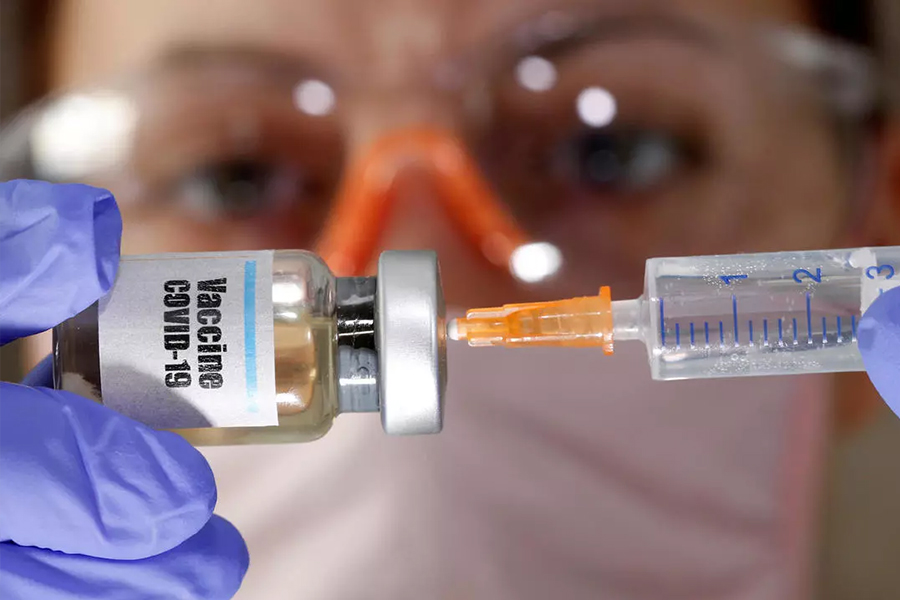


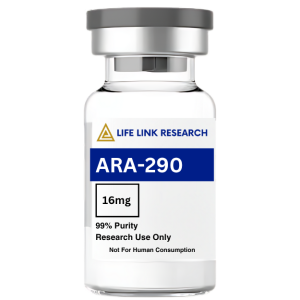
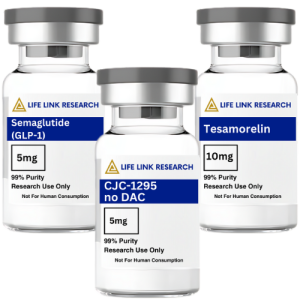
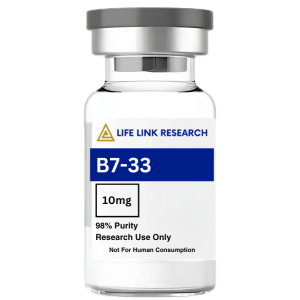
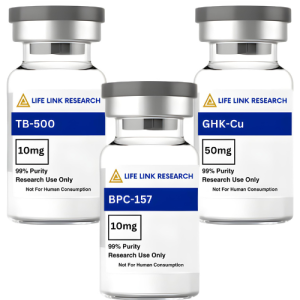
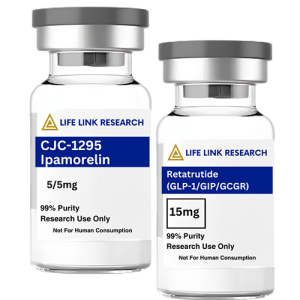
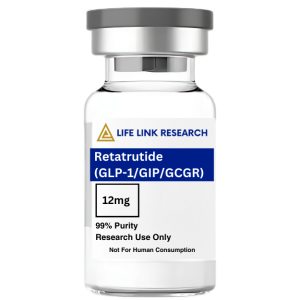


Reviews
There are no reviews yet.